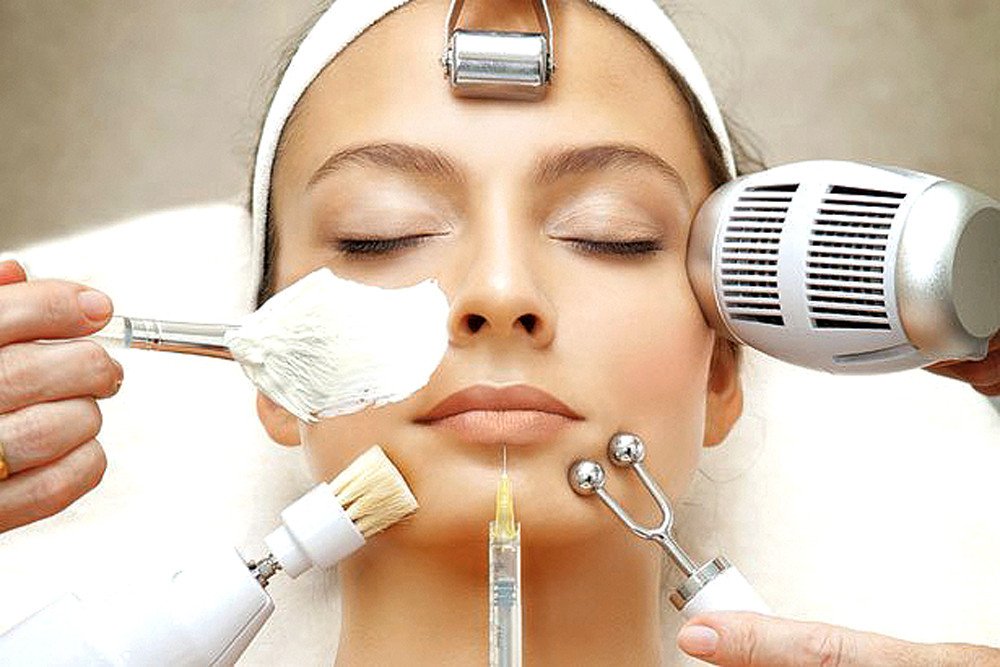
Filler Treatment
Dermal fillers are injections that plump up wrinkles and smooth lines on your face. There are several types of dermal fillers. Healthcare providers usually inject dermal fillers in the areas around your eyes, mouth and nose. This common cosmetic procedure typically produces results right away, and can last months or years.
As you age, your body starts to lose collagen. Collagen is an important substance that exists all over your body, including in your skin, muscles, bones and connective tissues. Decreased amounts of collagen in your skin causes skin laxity (loose) and loss of volume. Skin becomes thinner, loses its elasticity and starts to sag.
You may choose to get dermal fillers to:
- Add volume to sagging skin.
- Make your facial features more symmetrical.
- Plump up lips and cheeks.
- Smooth wrinkles and creases in your face.
Some medications prescribed to treat medical conditions such as HIV and AIDS can cause thinness in your face. Some people choose to get dermal fillers to restore volume to their face after taking these medications.
Dermal fillers are very common. Every year in the United States, more than 3 million people choose to get dermal fillers.
There are many types of dermal fillers. In addition to “off-the-shelf” fillers that use synthetic (manmade materials) and substances that naturally occur in your body, healthcare providers can use fat from your own body. Healthcare providers call this procedure “autologous fat grafting,” where they remove fat from one part of your body and inject it into your face.
The types of off-the-shelf fillers include:
- Hyaluronic acid (HA) is a naturally occurring acid in your skin. It gives your skin volume and keeps it hydrated. With age, your body stops making hyaluronic acid. Results from HA injections usually last six months to a year. Restylane® is a commonly used type of HA filler.
- Calcium hydroxylapatite (CaHA) is a type of filler that consists of a substance you have in your bones. Results from these fillers typically last around a year. Healthcare providers usually use CaHA fillers for deeper wrinkles. Examples of CaHA fillers include Radiesse®.
- Poly-L-lactic acid (PLLA) is a substance that helps your body create its own collagen. Healthcare providers usually use poly-L-lactic acid to smooth deep wrinkles on your face. The results can last two years or more. Types of PLLA fillers include Sculptra®.
- Polymethylmethacrylate (PMMA) fillers consist of collagen and very small balls that stay under your skin after your healthcare provider injects them. The balls give your skin volume and keep it firm. Bellafill® is one type of PMMA filler.
Your healthcare provider will review the types of dermal fillers and discuss the right option for you. Talk to them about setting realistic goals and the results you can expect after getting injections.
Before you get dermal fillers, you’ll have a consultation with your healthcare provider. You may wish to see a dermatologist, a healthcare provider who specializes in caring for skin. They’ll examine your face and ask about your goals and what areas you’d like to enhance.
They may mark your face with a pen or marker to show where the injections will be. They may also take pictures of your face. Your healthcare provider will recommend a specific type of filler or fillers and review possible side effects and recovery time.
During this consultation, your healthcare provider will also ask about your medical history. It’s important to tell them if you’re taking any medications, as some drugs can increase the risk of complications after getting fillers. Tell your healthcare provider if you have:
- Allergies.
- History of bruising or bleeding after similar procedures.
- Neurological problems.
- Skin conditions.
Many people see results of dermal fillers right away. The injections usually take less than an hour, and you can get them right in your healthcare provider’s office. Because it’s a nonsurgical treatment, recovery time is minimal.
Depending on the type of filler, results can last months or even years. Some fillers work for more than two years. Dermal fillers are also typically less expensive than elective surgical procedures.
Serious complications are rare, and some of these side effects are only temporary. But as with any cosmetic surgery procedure, there are risks. They include:
- Asymmetrical appearance.
- Bleeding, bruising, redness, pain and swelling.
- Damage to your skin, which can cause scars.
- Infection, which can lead to necrosis (death of the infected skin) in severe cases.
- Lumps or bumps under your skin.
- Numbness.
- Pimples that look like acne.
- Rash and itching.
Rarely, people have vision problems following dermal filler injections. If you have problems with your eyesight, along with weakness, discomfort or pain on one side of your body, get immediate medical help.
Book Your Free Consultation Now
Other Treatment
-
HIFU Treatment
A high intensity focused ultrasound facial, or HIFU facial for short, is a noninvasive treatment for facial aging.
-
Thread Lift Treatmen
Skin changes are part of getting older. Your skin loses its strength and elasticity over time. This leads to sagging and wrinkles. Your cartilage also gets weaker and doesn’t hold the skin around it up as well.
-
Vampire Facelift
The Vampire Facelift uses the power of Platelet Rich Plasma (PRP) – the stem cells and growth factors taken from the platelet cells in your blood
Gallery









